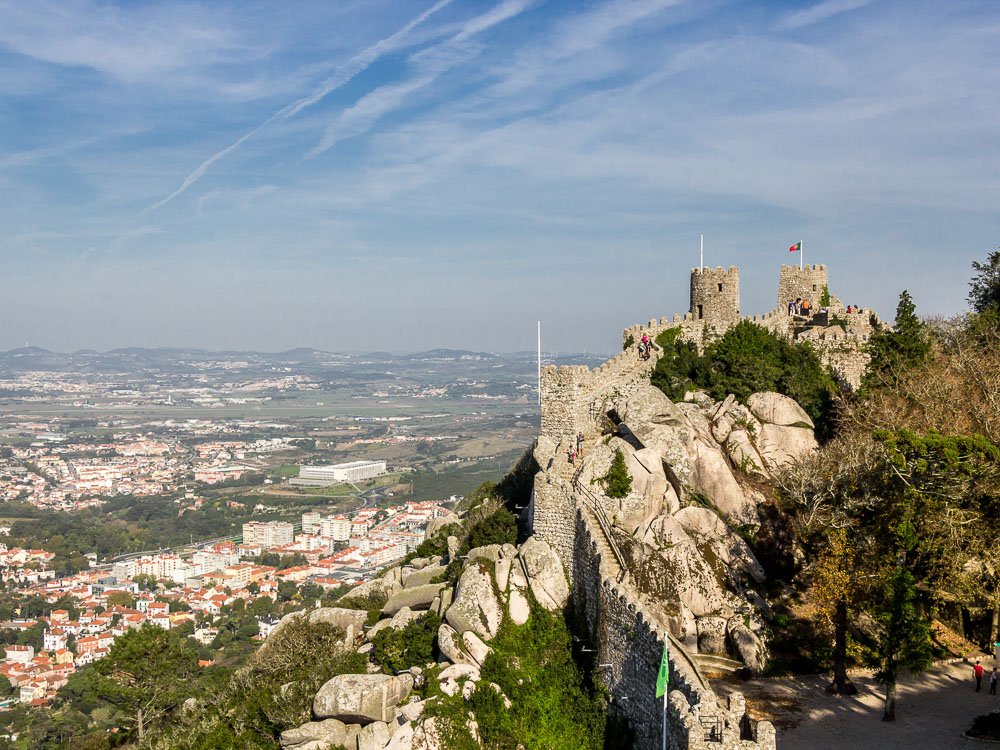Located on the highest hill of Sintra, the Castle of the Moors is an ancient fortress that was crucial for regional defense, thanks to its privileged views. Though its location was initially chosen for its strategic military advantage, now it serves as one of the most beautiful viewpoints in Portugal.
The castle also has a very long and interesting history, reflected on its well-preserved walls and archaeological discoveries. It’s definitely a place you don’t want to miss on your trip!
So, today I’ll give you all the information you need to enjoy your visit to the maximum. Get ready for a deep dive into the castle’s fascinating medieval background and its stunning views.
Castle of the Moors – in a nutshell
- Highlights: well-preserved walls, archaeological discoveries, stunning views
- Opening hours: 9:30 am – 6 pm
- Best time to visit: early morning or late afternoon
- Tickets: website
- Recommended duration of visit: 60 – 90 minutes
- Address: 2710-405 Sintra, Portugal
- Nearest metro station: Sintra Station

Index
- Why visit the Castle of the Moors?
- Highlights of the Moorish Castle
- How to get tickets?
- How to get there?
- Best time to visit and how long to stay
- Nearby attractions
- History and architecture
1. Why visit the Moorish Castle?
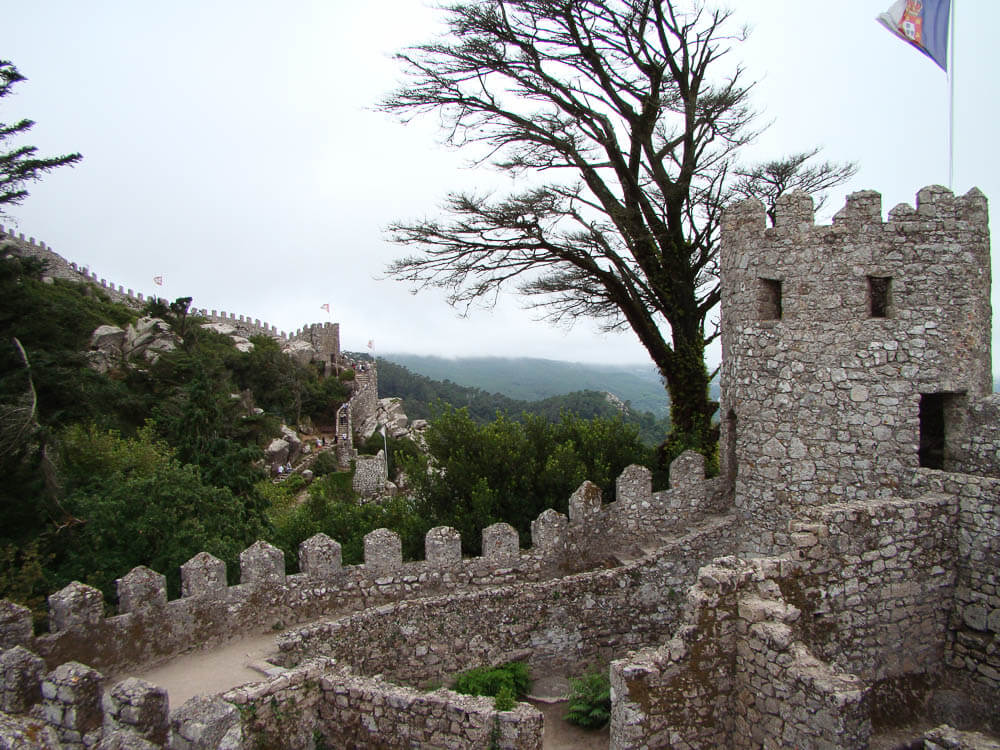
The Castle of the Moors or Moorish Castle (Castelo dos Mouros, in Portuguese) is a prominent historical site perched on the mountains of Sintra. Constructed in the 9th century by the Moors, this castle served as a strategic military outpost to monitor surrounding areas and guard against sea invasions.
Due to its privileged location, visitors get to enjoy stunning views of Sintra’s landscape and key landmarks, including Pena Palace and Quinta da Regaleira, as well as the Atlantic ocean. That alone is more than enough reason to visit it!
But, of course, that’s not all! There, you’ll also get to explore ruins that house archaeological artifacts, view informative videos detailing the castle’s history, and wander through over 450 meters of well-preserved battlements, which include five towers, all open to visitation.
The Castle of the Moors is truly a must-visit destination for anyone interested in culture, nature, and history. By exploring its ancient grounds, you’ll get an engaging and immersive experience with absolutely stunning surroundings. It’s everything I could ask for in a tourist attraction!
2. Highlights of the Moorish Castle in Sintra
2.1. The King’s Tower
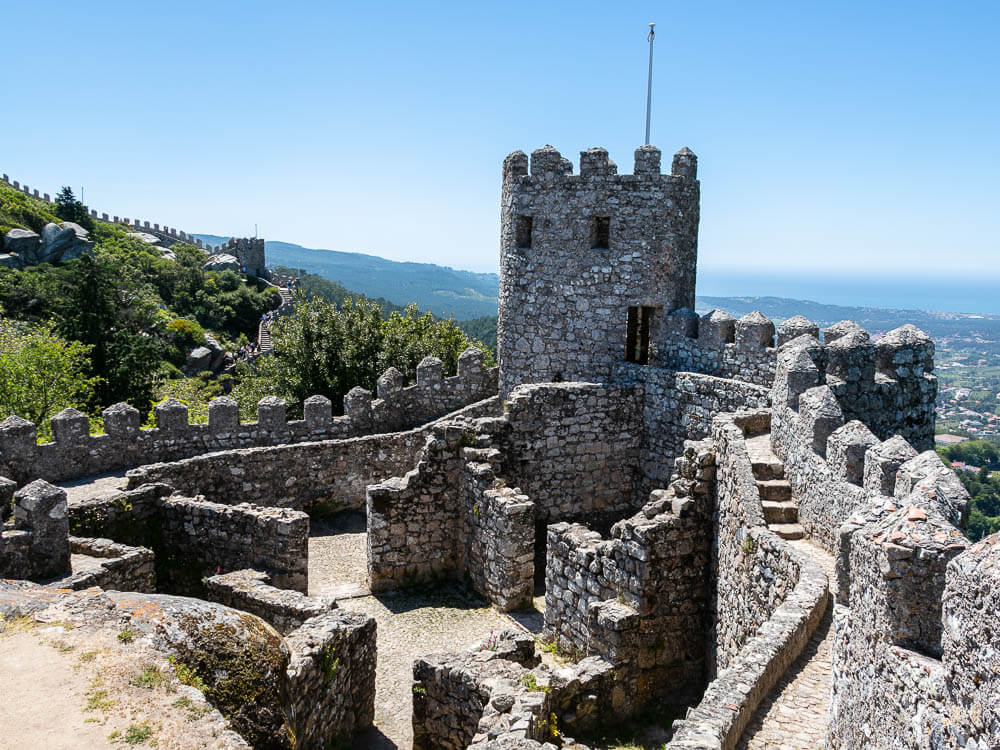
The King’s Tower is the highest point of the Castle of the Moors, offering incredible views over the Serra de Sintra hills and Palácio da Pena.
Historically, it was a place frequently visited by King Ferdinand II, known as the King-Artist, for relaxation and inspiration. Rumor has it that the views from the tower fueled his creativity, which makes total sense when you realize how many architectural developments occurred in Sintra during his reign.
Reaching the battlements of the King’s Tower is a bit of a challenge, as it requires climbing 220 steps. But, trust me, the effort is totally worth it! From up there, you’ll be well rewarded with stunning views across one of Portugal’s most unique landscapes.
2.2. The cistern
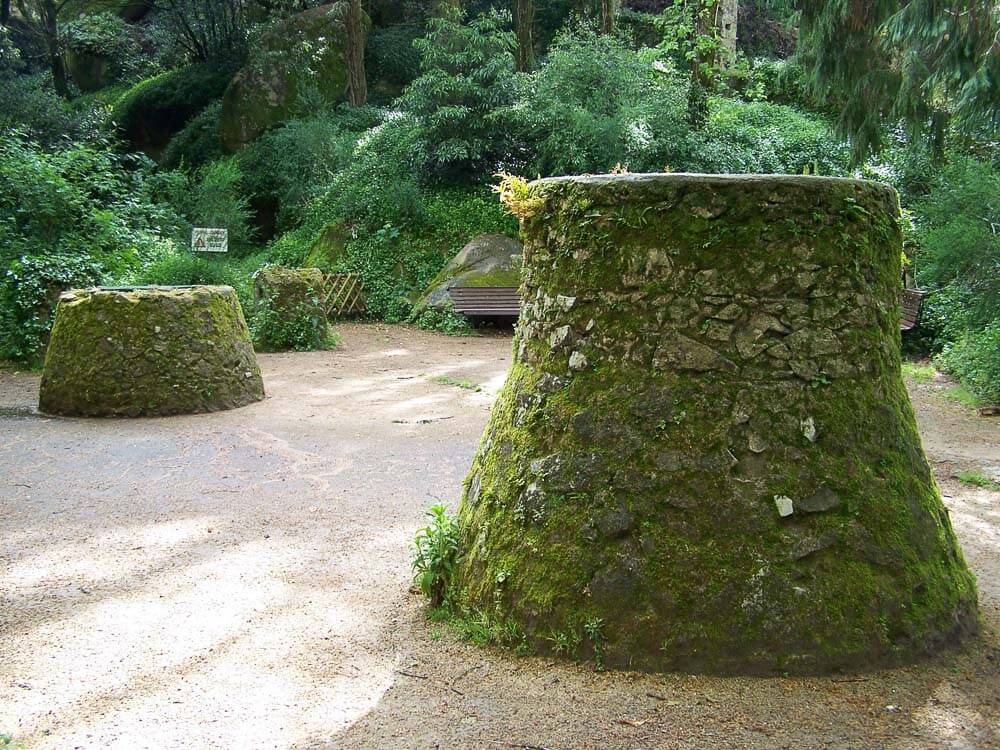
The Cistern at the Castle of the Moors was likely built in the 13th century, and had a crucial role in survival during conflicts, as it provided the castle’s inhabitants with a steady water supply that allowed them to withstand prolonged sieges.
Built from granite blocks repurposed from an earlier structure, it holds approximately 600 cubic meters of water and features a vaulted ceiling and two ventilation chimneys to ensure proper air circulation. It’s really interesting observing these early engineering techniques, and how important they were for the castle’s defense mechanisms.
2.3. The Door of Betrayal

Hidden in a rarely used part of the fortification, the Door of Betrayal was designed for secretive movements, providing an escape route during sieges. It was only used when all other options were exhausted, allowing occupants to avoid capture or execute tactical maneuvers outside the castle walls.
However, as you may have gathered from the name, the Door of Betrayal was a tricky thing. While it did serve as an escape route for the castle’s defenders, it also allowed the enemies to access the interior if discovered… Or if someone from the inside shared the information.
Seems like something straight out of a novel, right?!
2.4. Christian Medieval Necropolis
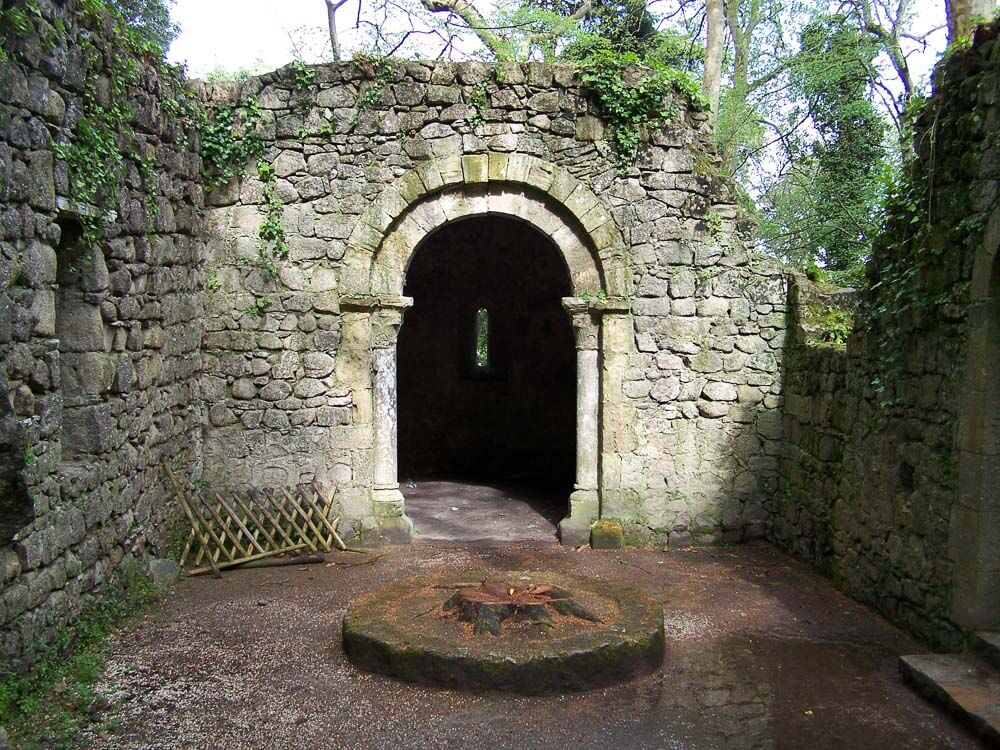
Initially, the Christian Medieval Necropolis was an Islamic medieval neighborhood from the 10th to 12th centuries. The community lived on the protected slopes of the hills, where remnants of homes, an oven, and silos have been discovered.
However, after the conquest by Afonso Henriques, the area was transformed into a Christian burial site. From the 12th to the 14th centuries, this site evolved into a necropolis associated with the Church of São Pedro de Canaferrim.
Archaeological investigations have uncovered graves containing multiple individuals, as well as artifacts from various periods, including Neolithic items and a vase from the 5th century BC, showing the site’s long-held importance.
2.5. Views

The Castle of the Moors was strategically built on the highest of the Sintra hills, which allowed for surveillance over the surrounding land and sea. Today, these extensive views are what make this place so popular among visitors!
With its panoramic views across the Sintra region (on clear days, you can see as far as Mafra to the north and Ericeira to the west), it’s a place you simply have to see with your own eyes to understand just how incredible it is!
3. How to get tickets?
The Castle of the Moors in Sintra is open daily from 9:30am to 6pm, with the last admission 30 minutes before closing time. The ticket office closes for lunch from 12pm to 1pm, and there are automatic ticket vending machines that you can use to buy your tickets on-site.
An adult ticket (ages 18 – 64) is €12, while youths (ages 6 – 17) and seniors (over age 65) pay €10. A family ticket option is available for €33, covering two adults and two youths.
To avoid lines at the ticket office or the machines, I recommend buying your tickets online through the official Parques de Sintra website, where you can also find additional information about Castelo dos Mouros and other historical sites.
4. How to get there?
If you’re going to the Castle of the Moors from Lisbon, take a train on the CP – Sintra Line, departing from Oriente, Rossio, or Entrecampos stations. After you arrive at Sintra’s train station, bus 434 will take you directly to the Moorish Castle.
If you’re feeling adventurous, however, you can also hike up to the castle. There are two primary trails: Caminho de Santa Maria and Vila Sassetti path. While they offer impressive views, they both have steep slopes and are quite long.
After all, the castle is located about 500 meters from Sintra’s historic center and is perched on a summit that stands 450 meters high. So, unless you’re a seasoned hiker, I’d recommend sticking to the public transport.
5. Best time to visit and how long to stay
The best time to visit the Castle of the Moors in Sintra is early in the morning (around 9:30 am) or later in the afternoon (after 4 pm) to avoid the peak crowds that tend to gather between 12 pm and 2 pm. I also recommend visiting during the week instead of the weekend for a more peaceful experience.
As for the best seasonal timing, it’s best to visit the Moorish Castle between April and June or during September and October, when the weather is milder. It’s also a good idea to check the weather forecast before your visit, and avoid foggy days.
Normally, it takes about 60 to 90 minutes to visit the Castle of the Moors, making it ideal for a half-day trip to Sintra, or as a combined visit with other attractions in the city, such as Pena Palace.
6. Nearby Attractions
Just a short distance away from the Moorish Castle is Pena Palace, one of Portugal’s most popular destinations. This 19th-century palace features colorful terraces, majestic battlements, and well-preserved interiors that reflect the opulent lifestyle of Portuguese nobility.
Another nearby attraction is the National Palace of Sintra, distinguished by its iconic twin chimneys and an impressive collection of Moorish tiles. As one of Portugal’s oldest palaces from medieval times, it served as a royal residence until the early 20th century.
7. History and architecture of the Castle of the Moors
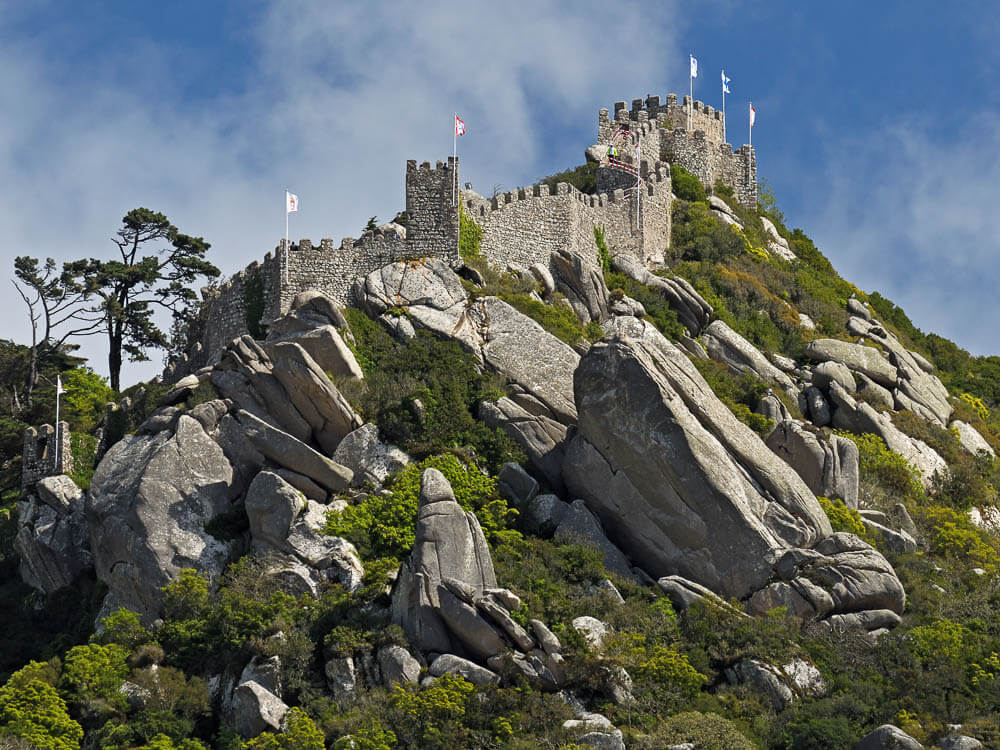
The Castle of the Moors, or Castelo dos Mouros, is an 8th-century fortress built by Moors from North Africa. Positioned on a high hill, the castle’s location was chosen for its military advantages, allowing extensive observation of the surrounding area.
It showcases a remarkable blend of Islamic and medieval European architectural influences. Constructed primarily from stone, its intricate masonry has stood the test of time, with sturdy walls and tall towers that provided essential defense against invasions.
In 1093, during a Crusade to reclaim territory from Moorish rule, the castle was captured, only to be lost again in 1094 to Moorish forces before being recaptured. This back-and-forth continued until 1147 when, despite enhanced fortifications, it fell to a large Christian force.
After this conquest, Portuguese kings reinforced the structure. However, as Lisbon grew more prominent and the political power shifted, the focus on maintaining Castelo dos Mouros diminished.
By the 15th century, mainly Jewish settlers lived in the fortress until their expulsion in 1497 under King Manuel I. The castle suffered further setbacks when lightning struck and destroyed key structures like the central keep in 1636, followed by severe damage from the great earthquake of 1755, which demolished many walls and left it largely forgotten.
Restoration efforts began during King Ferdinand II’s reign, primarily to complement his Pena Palace project. He envisioned the grounds as a place for relaxation and reflection amidst historical architecture and lush greenery. It’s safe to say that, today, his vision truly came to life!
Step back in time in the Moorish Castle
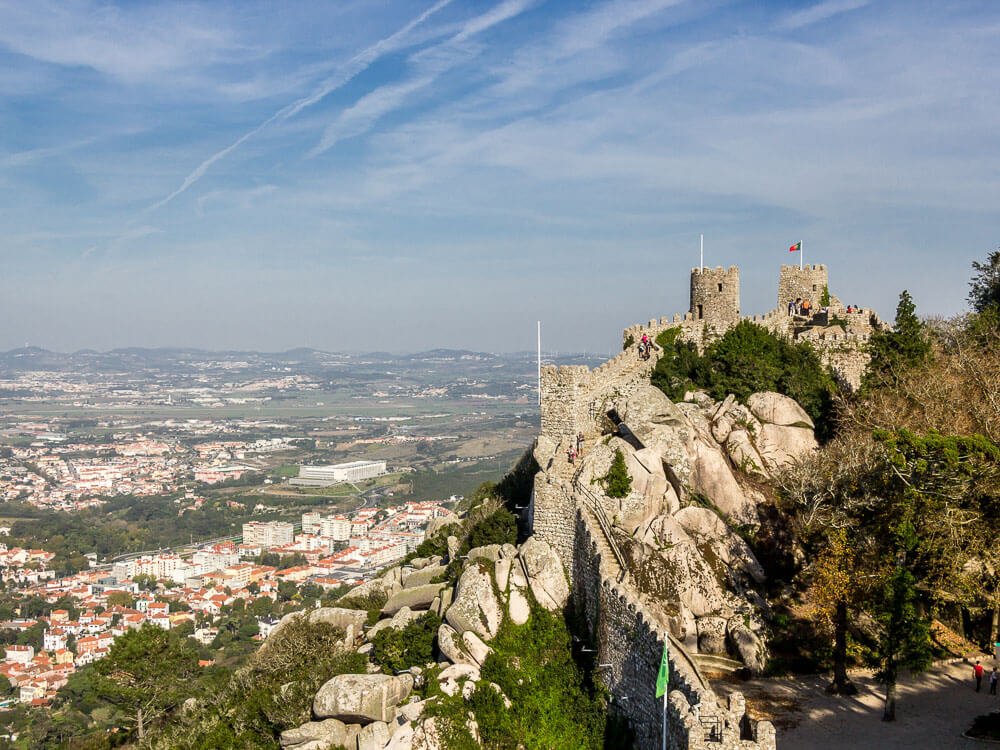
The Castle of the Moors is a must-visit destination in Sintra, offering a unique blend of historical architecture and natural beauty.
With its strategic location and important defensive role, it withstood the test of time, as well as numerous battles and changes in rulership. Now, its well-preserved walls and breathtaking views across the region attract visitors from all over the world.
Walking through this ancient location, it’s impossible not to feel connected to Portugal’s past and heritage. And the views definitely don’t hurt either!

